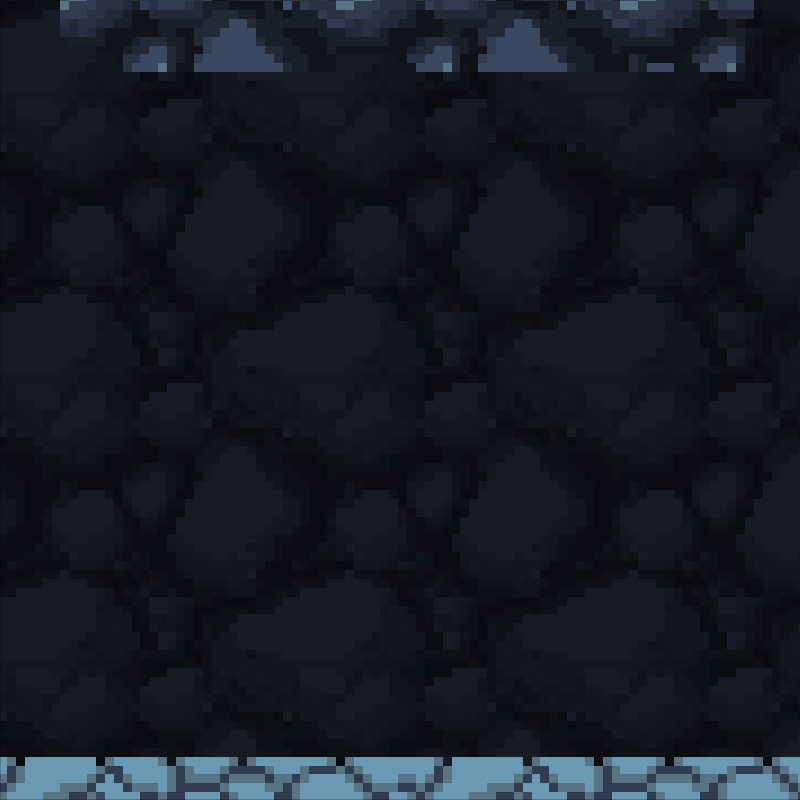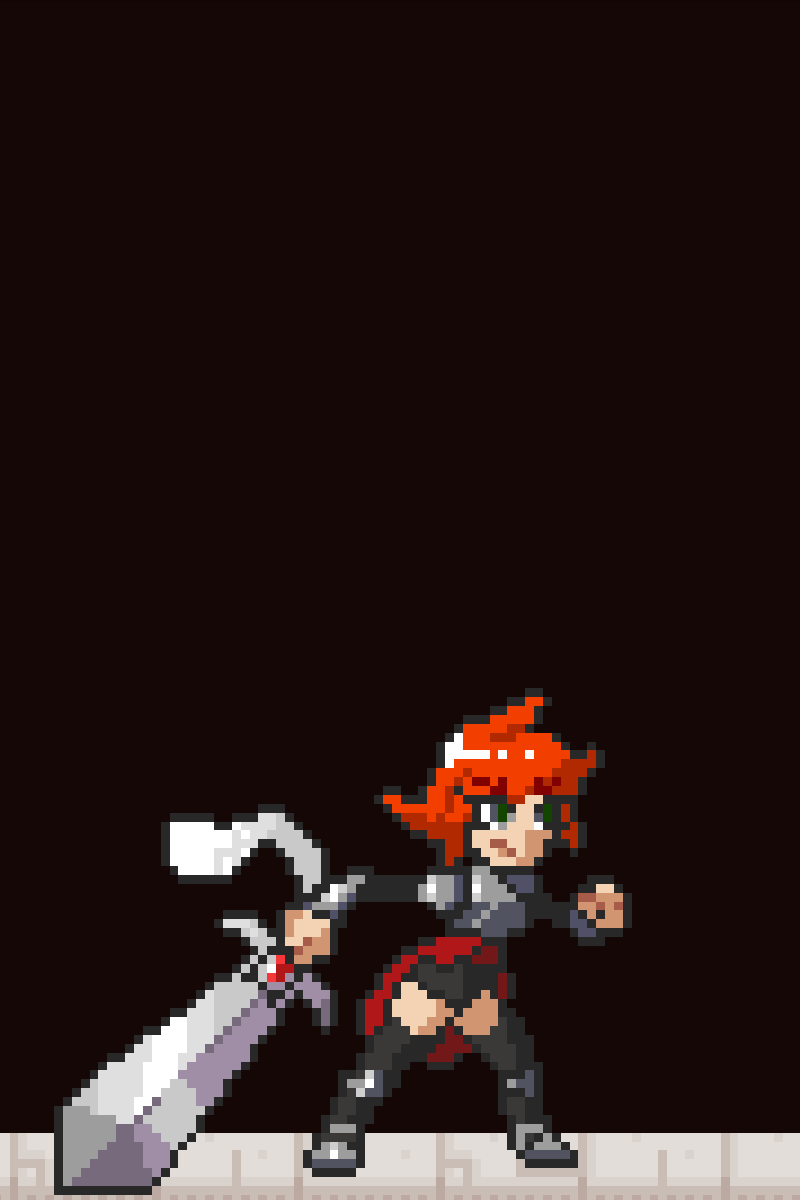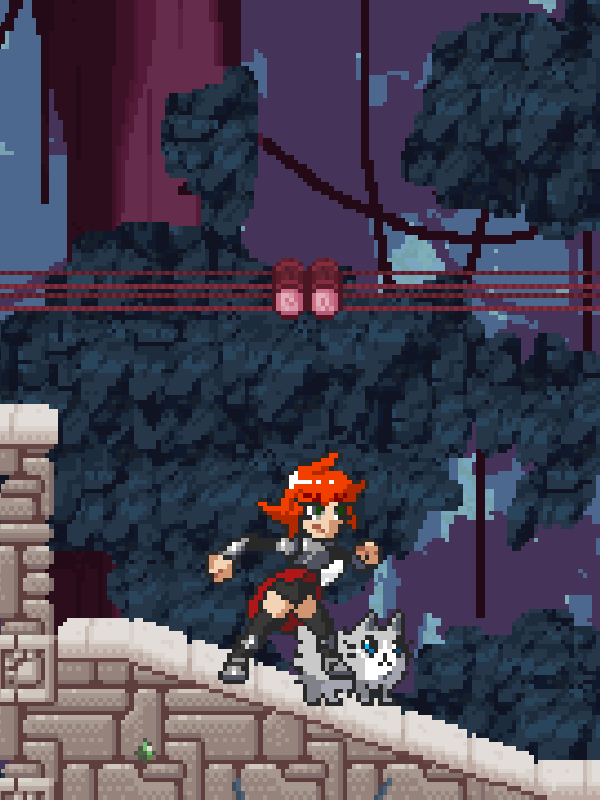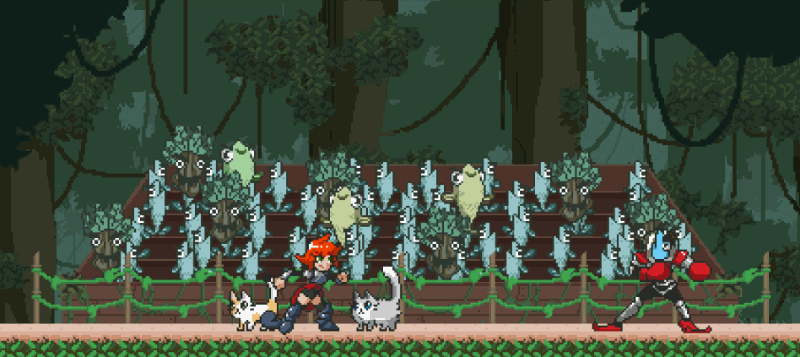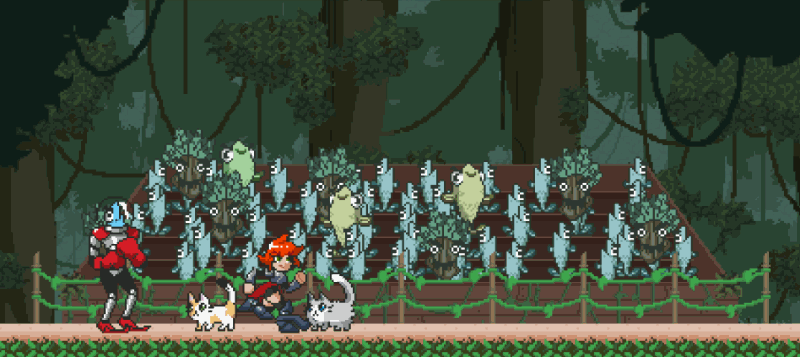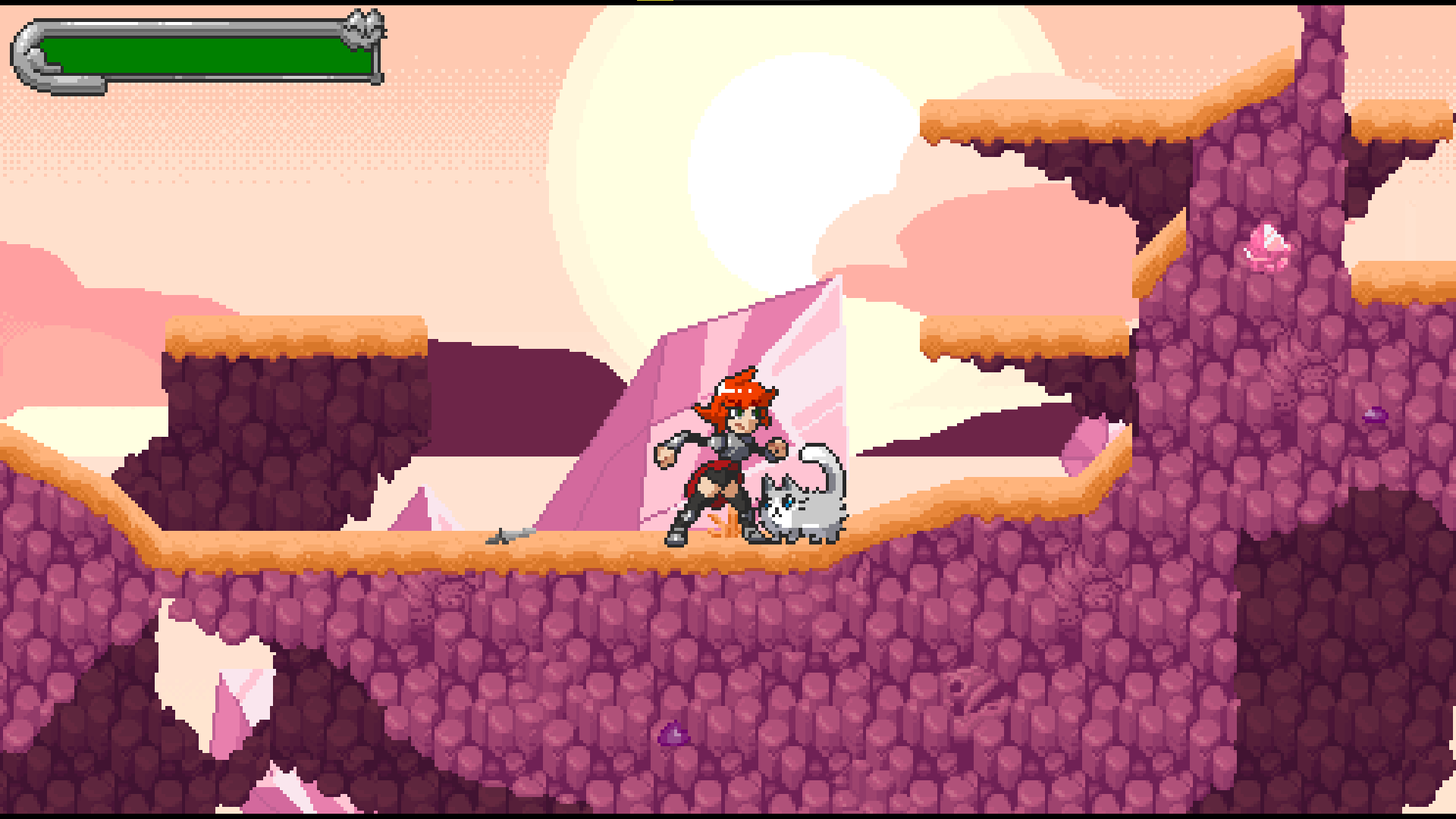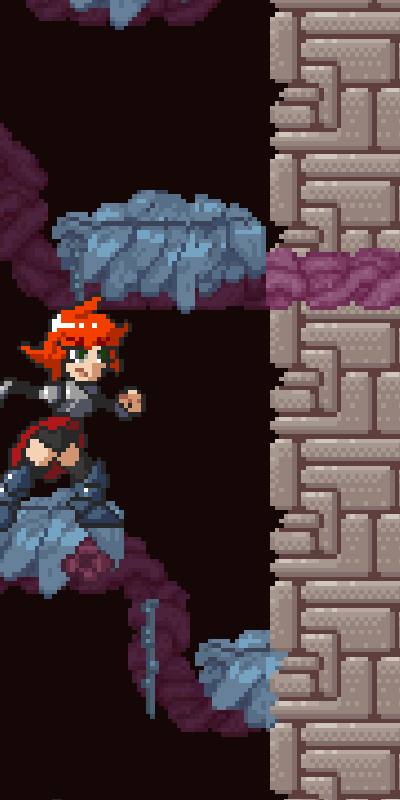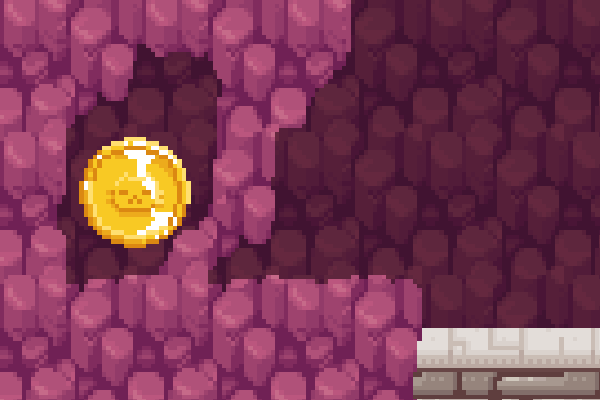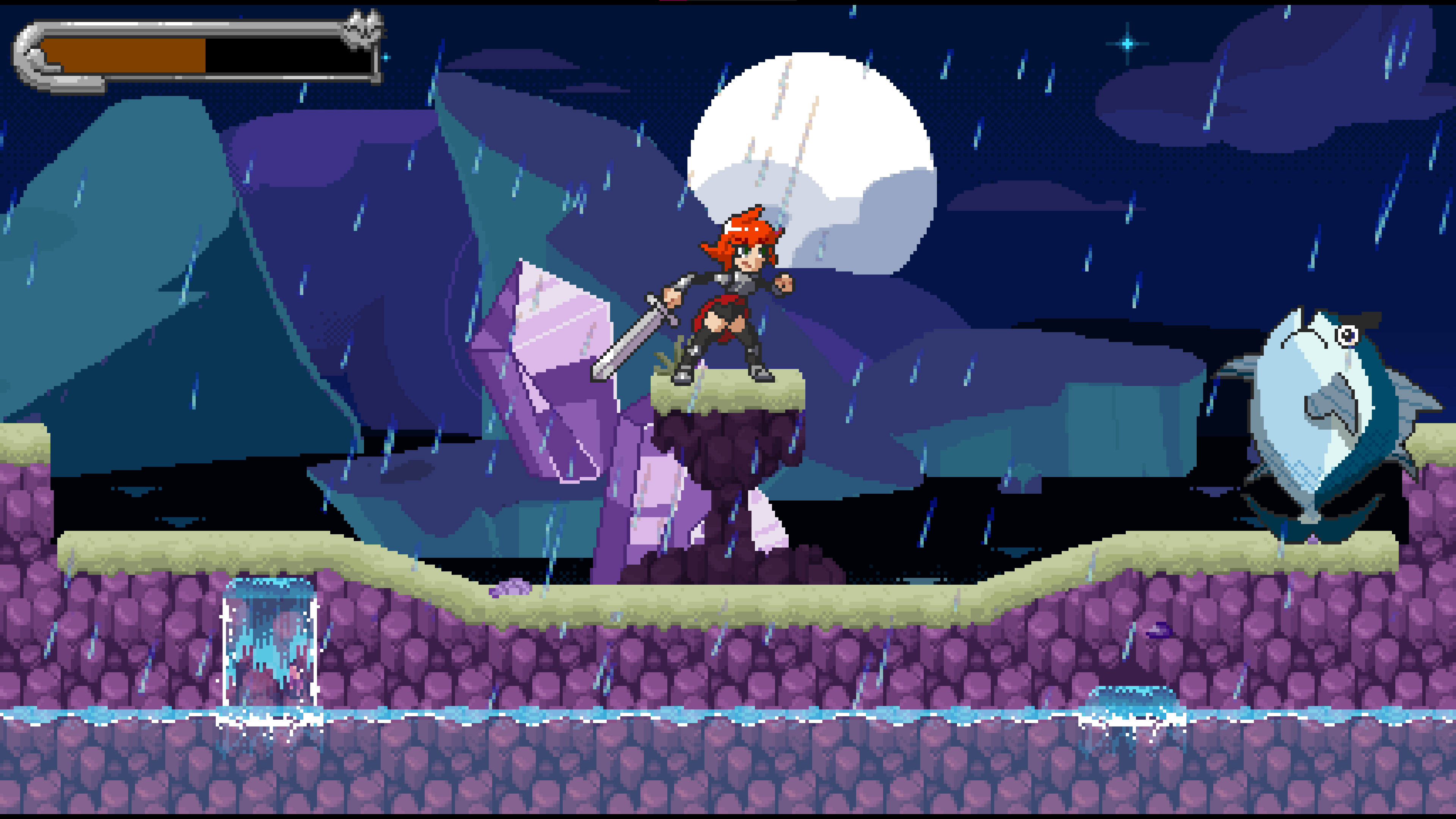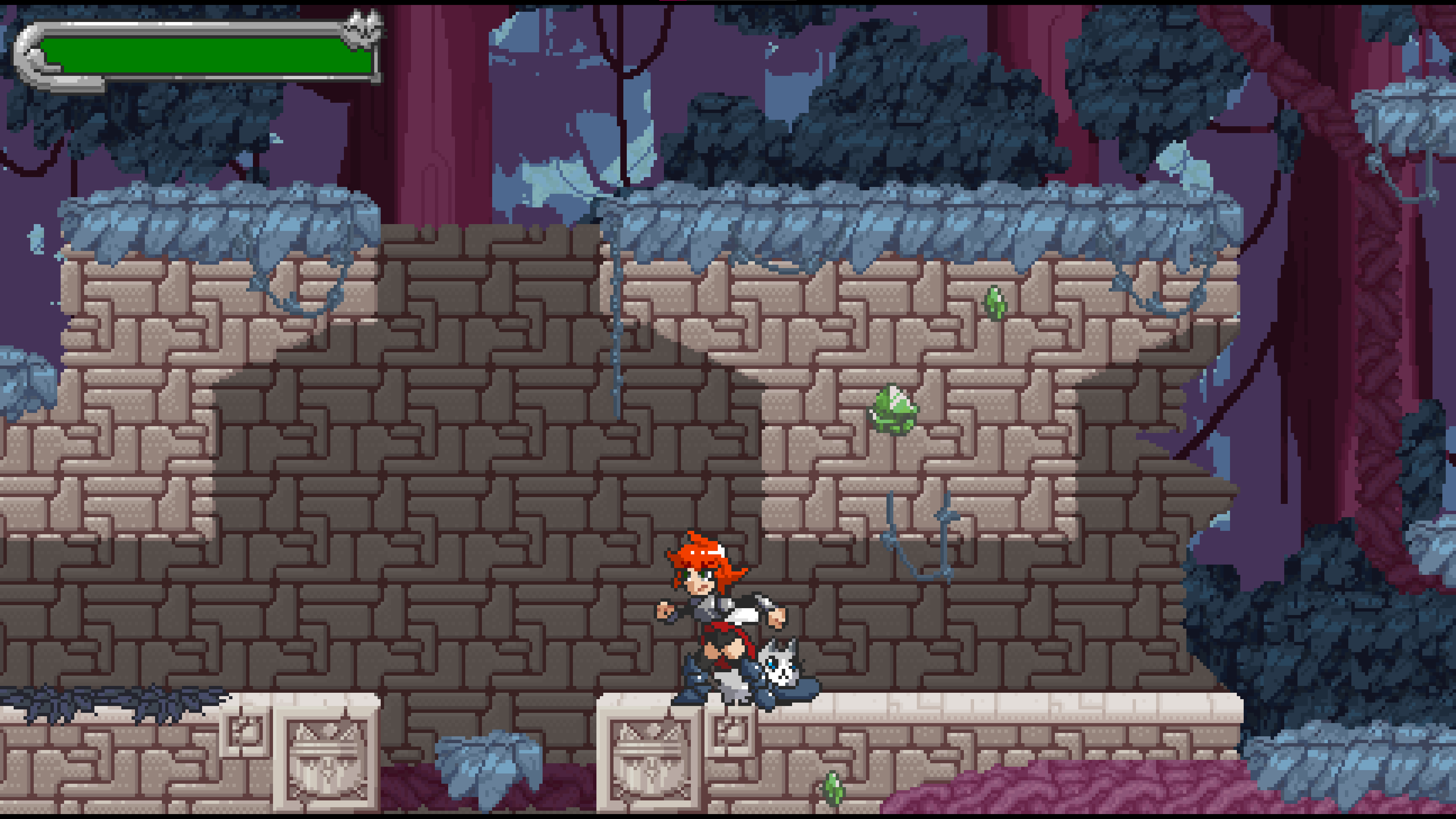The Legend of Excalipurr
While the high concept for The Legend of Excalipurr was pitched by a friend of the team, the bulk of the design fell to me, who was also the sole programmer. The project was never finished and eventually fell to the wayside, but along the way I got to make a lot of decisions regarding various systems and learned a lot of things, and I'd like to talk about a few of them here.
Weapon Design
Weapon Swapping
I didn't want the player to be concerned with inventory management. The game needed to feel fluid, and changing weapons needed to be part of that. Rather than including a way to cycle through items, I decided to ensure from the start that each weapon could be bound to a different button. Since the premise of the game is cats that transform into items, this mechanic gave us an opportunity for a fun visual. The moment the player uses a weapon they aren't holding, the appropriate cat transforms into the weapon, and the weapon they are holding, if any, transforms back into a cat.
Sword Physics
Excalipurr itself is the primary attack for nearly the entire game, so I needed to ensure that it felt perfect to use. The game has a great deal of verticality, and landing the quick sword swing midair proved to be more difficult than I was happy with. I added a little bounce (which I ended up calling a "sword hop") to airborne strikes, and it made landing attacks against an intended target much easier. The second attack (the thrust) has less bounce on it and more delay at the end to ensure the player can't stall in midair for longer than feels right.
Sword hopping proved to be a lot of fun, so I added an extra use for it. If timed at the height of a jump, a sword hop allows the player to reach just one tile higher. This added a lot of opportunity for level design, especially in creating shortcuts and tough to reach areas. I liked the idea of each item being useful for more than just combat, and Excalipurr was no exception.
Hammer Impact
For the hammer ("Meowlnir"), I had a very particular vision. I wanted it to feel like a heavy baseball swing, and part of feeling that impact is the screen freeze. In our 2D animations we used a great deal of smear frames, and freezing on a smear didn't correctly capture the exact moment of impact like I envisioned. To acheive this, I programmed the animation to branch at the point of impact. Even before screenshake, the hammer felt heavy.
Enemy Design
Boxer Boss
As the first "real" boss of the game, the boxer needed to be mechanically unique. He has a few basic punches he can perform, but two of his moves needed special attention: the charge punch and the jump slam. Both of these moves needed to be heavily telegraphed so they could be as devastating as they needed to be.
The charge punch is simple enough. It deals a high amount of damage and launches the player into the air, but it can easily be jumped over. The charge punch will also only activate once the boss reaches a health threshold. It activates immediately at the threshold and then again any time the player is at least a certain distance from the boss.
Like the charge punch, the jump slam needed to be telegraphed, but unlike the charge punch, I wanted it to start instantly. The anticipation needed to happen midair. I needed the rise to be gentle and floaty, but the fall needed to accelerate quickly for an impactful slam. To accomadate behaviors like this, I gave the character object more variables related to jumping. I had an initial velocity for jumps as well as a maximum falling speed, but gravity was split into rising gravity and falling gravity. This, combined with horizontal acceleration and air control, gave me a lot of flexibility in designing enemy movement. Characters could feel light, heavy, floaty, stiff, or any other variation, and the slam felt great as a result.
Also, it's subtle, but the crowd briefly moves a little faster when the player is hit.
Level Design
Path Signaling
With a variety of environments it was important to show where the player could walk. Surfaces intended for walking needed to be clear, so we had them highlighted. This was important because the ends of paths could also be indicated this way, which opened up the opportunity for secret walls. Secret walls could be signaled in a way that was consistent but still required attention from the player. I didn't want secrets to feel completely arbitrary, but I wanted to have a lot of secrets.
In level design, I always want to allow the player to feel smart. If there's a place that looks reachable, it should be either be reachable or be removed. Players are quite skilled at finding ways to reach unexpected places, and meeting an invisible wall after a difficult and clever feat is disappointing. On the other hand, rewarding players for finding unusual locations leads to a lot of memorable (and sharable!) experiences.
Level Pacing
To avoid burnout, my intention was to alternate level styles between "action" and "puzzle" each stage. Action levels were mostly linear and tested the player's combat skills, while puzzle levels were more exporatory and required a fair amount of thinking. The item acquired in each level also reflects its style, with action levels granting weapons and puzzle levels granting wearable equipment.
The first level, Crystal Coast, was an action level and introduced the player to all of the basic mechanics of the game. It branches very subtly in two places, but the paths rejoin quickly and serve as some foreshadowing that branching paths do exist. It also featured a miniboss, trapping the player on a screen to test what they've learned so far. This is the level where the player gets Excalipurr, the sword they'll use for most of the combat in the game.
Once the coast wraps up, the player enters the jungle and things start opening up. The environment loops back on itself, requiring the player to use their newly found item to access the next area. It has some tougher enemies, but the player is allowed to approach them at their own pace, unlike some of the gauntlet fights from the intro. The jungle gives the dash boots.
From there, the levels were to alternate. The mountain was an arduous climb that gave the player the hammer. The multi-path volcano dealt with lava puzzles and gave the climbing gloves. The mine was a fun mine-cart ride through a flooded gem mine, giving the bow. The crypt was a ghost-filled maze that occasionally released the player into a desert, only to suck them back into the crypt. The cape found there granted a double-jump and glide. The sky ruin was a hanging garden tower that served as the final climb towards the end-game castle. The player gained the katana there.
